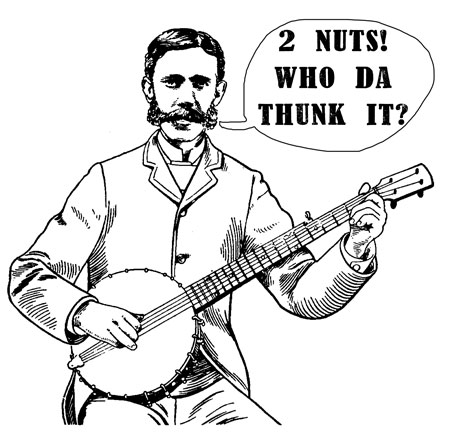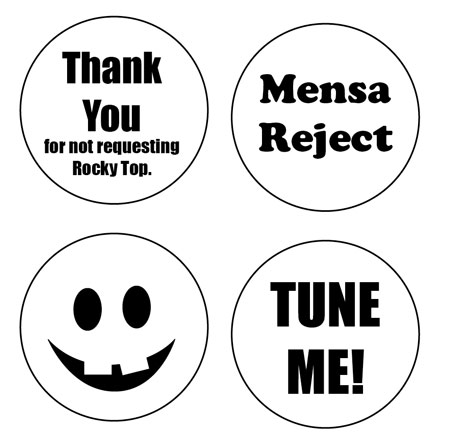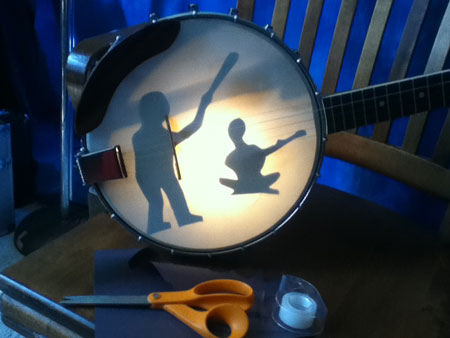|
10 Things Unique to the Banjo Posted by Bradley Laird The "standard" bluegrass band instrumentation consists of the mandolin, guitar, bass, fiddle and five-string banjo. This configuration was settled upon by Bill Monroe, the father of Blue Grass Music. Of course, the dobro and harmonica sometimes slip in, especially by acolytes of Flatt and Scruggs' music. Looking at the standard five instruments I think it is interesting to note these things which are unique to the banjo when compared to the other instruments in the bluegrass ensemble. 1. The banjo is the only instrument of the five which has an odd number of strings. It has 5, while the mandolin has 8, the guitar 6, the bass 4 and the fiddle 4. (That's 27 total strings for you trivia lovers.) 2. There is no E string on a banjo. All of the other four instruments have at least one string tuned to an E note. There are two G strings on a banjo, another unique feature. (Insert your own banjo joke here.) 3. The banjo has a drone string. That's that little short string with the tuner sticking out of the side of the neck. 4. The banjo is the only instrument of the 5 which has a non-wood vibrating "sound board." In the old days it was usually animal skin, now new-fangled plastic or mylar is the norm. 5. The bluegrass banjo is played with three picks! Guitar and mandolin, one. Fiddle and bass, none. 6. Capos are clamps placed on the fretboard to raise the pitch to play in higher keys. The banjo player is the only member of the band who must use TWO capos! See this explanation on my free jam session survival site.
7. The nut (other than the person playing the banjo) is a part of the neck of all of these stringed instruments which guides the strings to the tuning machines and defines the end of the vibrating portion of the strings. Mandolin, fiddle, guitar and bass have one nut. The banjo has TWO nuts. (Insert joke of your choice here.) See parts diagram here. 8. The banjo is held together by nuts and bolts and can be taken apart (even the neck can be removed) with a wrench and a screwdriver. Banjo pickers, like Marines in boot camp, learn to take apart and reassemble their weapon blindfolded. All of the other instruments are glued together. 9. The banjo in a bluegrass band is normally tuned to an open G major chord. This means that with no left hand the banjo picker gets one free chord for nothing! None of the other four standard bluegrass instruments come with this easy, built-in chord. (See my free lessons here to learn to play this chord!) 10. You can use your banjo as a modern art piece and make a statement with it. For example, it is possible to cut out little construction paper silhouettes and stick them on the underside of the head, and then hang a small light bulb on the end of a drop cord inside the body of the instrument to project your own customized "shadow show" on the head of the instrument while you play it. Can't do that with your fiddle, mandolin, guitar or bass! Here are some possible suggested designs: (Enlarge, print out, tape them inside or carefully cut or chew out your own designs. You might even go wild on the head with a Sharpie.)
Here is a bit of high-class modern banjo art I made. I call it "The Jealous Rival". This objet d' art is for sale. Paypal me
Brad
|
Copyright 2014, Bradley Laird
![]()




